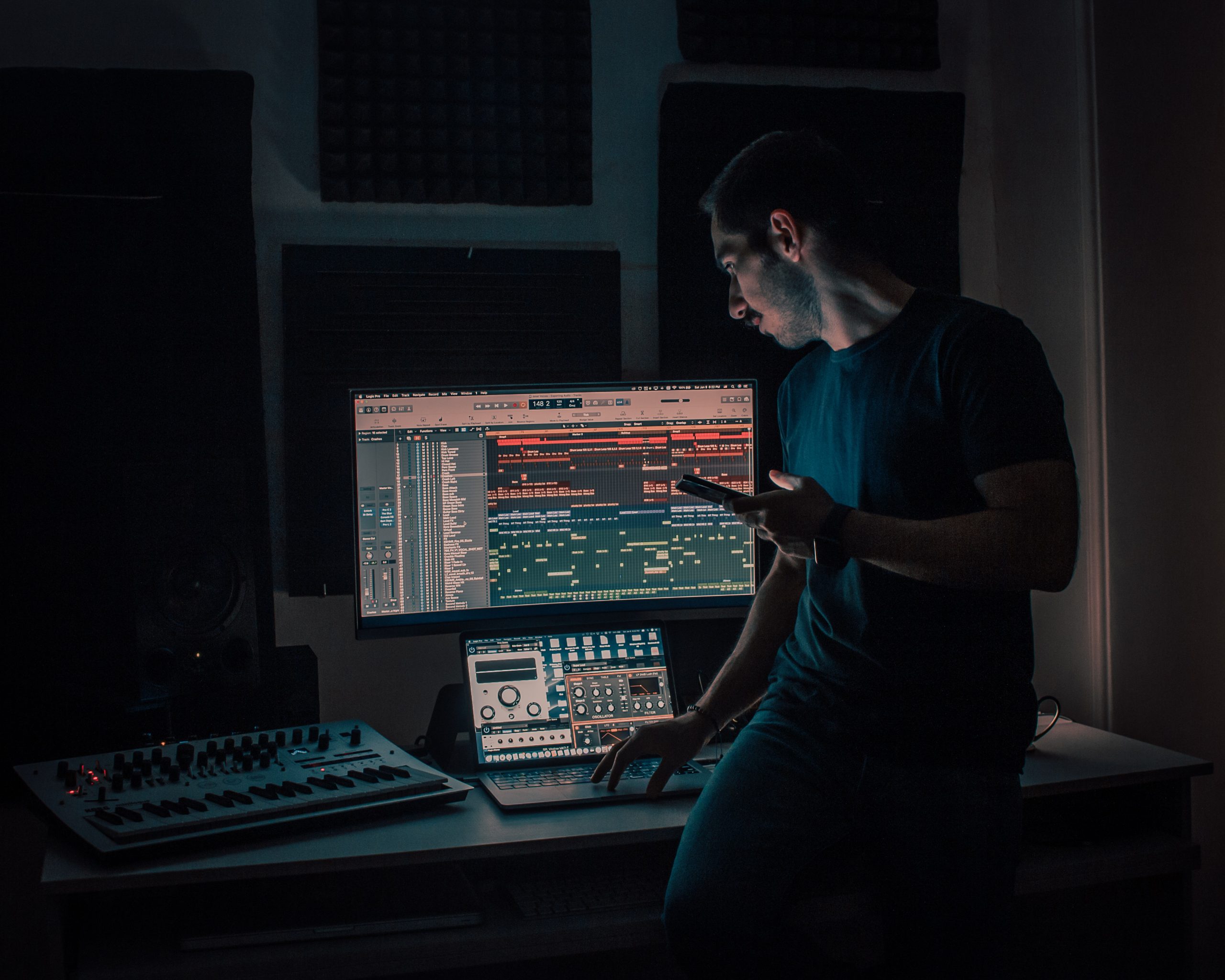Working with dual monitors for music production
Image Credit: Rezli
Are two monitors better than one for producing in your home music studio? Let’s explore the benefits of dual monitors for DAWs.
There’s a lot to stay on top of when you’re making music in a DAW, especially if you’re using a laptop. Using two screens for music production can instantly transform your DAW workflow, to make your producing more organised and faster.
There’s no set way to use two screens – it depends on the DAW you’re working in, and you’ll soon figure out a layout that works best for you. Multiple screens also makes your home studio feel a bit more professional, if you care about that sort of thing.
So advantages of dual monitors for producers, and what’s the best way to use multiple screens in the studio?
Save valuable music producing time with two screens
It’s surprising how much time opening and closing windows and moving plugins out of the way adds to your workflow.
When you’ve got another screen to play with you can spread out the elements of your software to have everything in your eyeline – no more searching for a minimised window. Once you’re in the producing flow, the last thing you want is tedious mouse clicking holding you up.
Are two monitors better than one for workflow?
Try keeping one screen for mixing and the other for editing. Putting the mixer on a separate screen makes it clearer and easier to access, and stops it blocking half the tracks on your main screen.
Use the second screen for any windows that make your central DAW screen feel claustrophobic. You could drag the piano roll off to the second screen for a clearer view, to free up space and save valuable time lost to scrolling and zooming out.
The second screen is also perfect for a notes section, placing it somewhere permanent so you can always have it in view.
Keep one screen for beyond the DAW
How about keeping one screen for other applications, besides the DAW you’re recording and mixing on? That might be a browser window with Splice open, for example, so you can drag plugins straight over, or window of reference tracks open for easy comparison your mix.
Just make sure you don’t leave a distracting social media platform open over there, or fall down a YouTube rabbit hole…
How to position dual monitors
To avoid the dreaded producer hunch, consider buying a laptop stand to raise the level of your computer to match the other screen. An external keyboard and mouse will be helpful in that case.
Some producers go further than two screens, with three monitors – one for editing, one for the mixer, and one for plugins. Not to mention those that have a smartphone or iPad to hand as a remote controller for their DAW.
Using multiple screens is by no means essential for making music. But if you’ve got a monitor lying around gathering dust and enough room on your desk, it’s well worth switching up your workflow and giving it a go!
